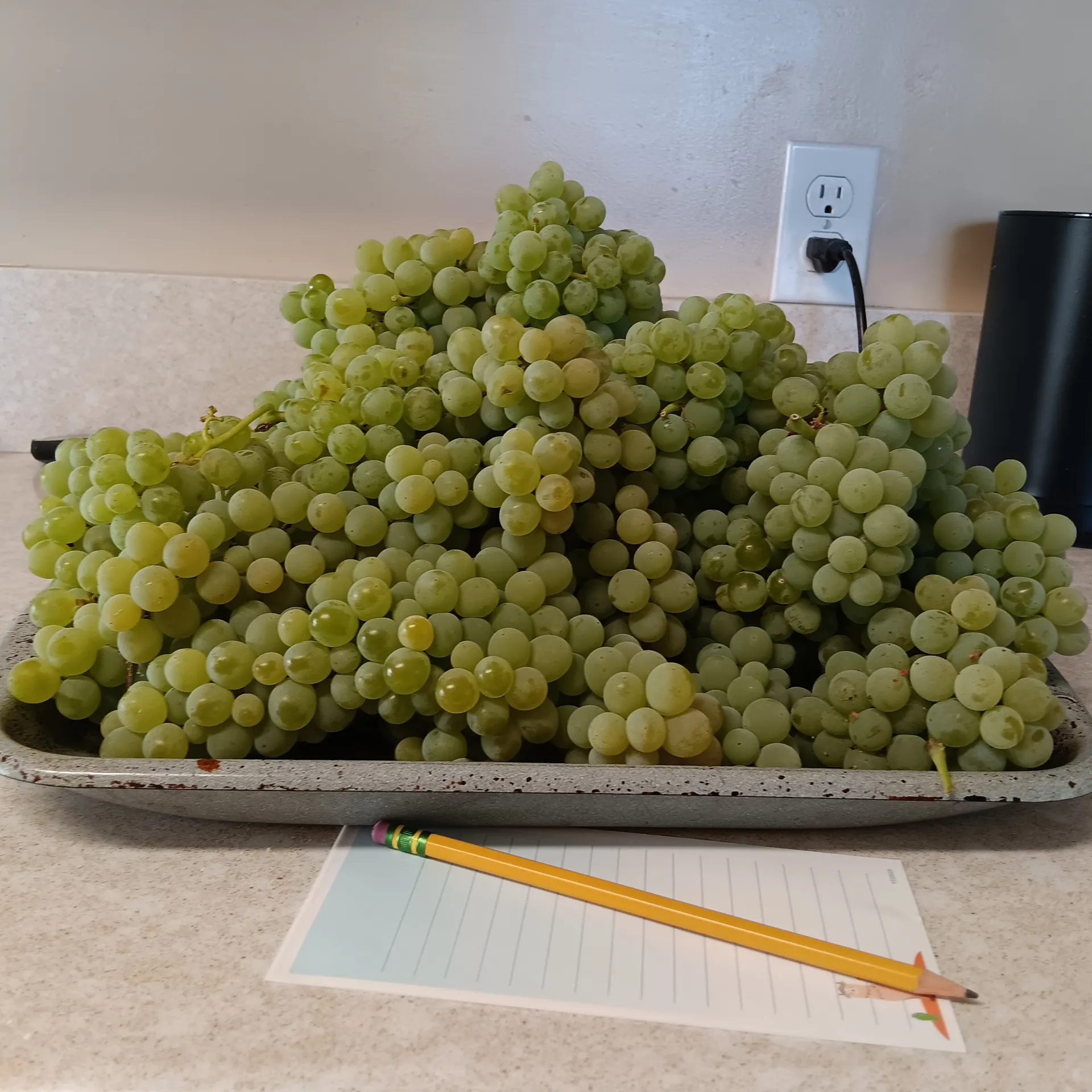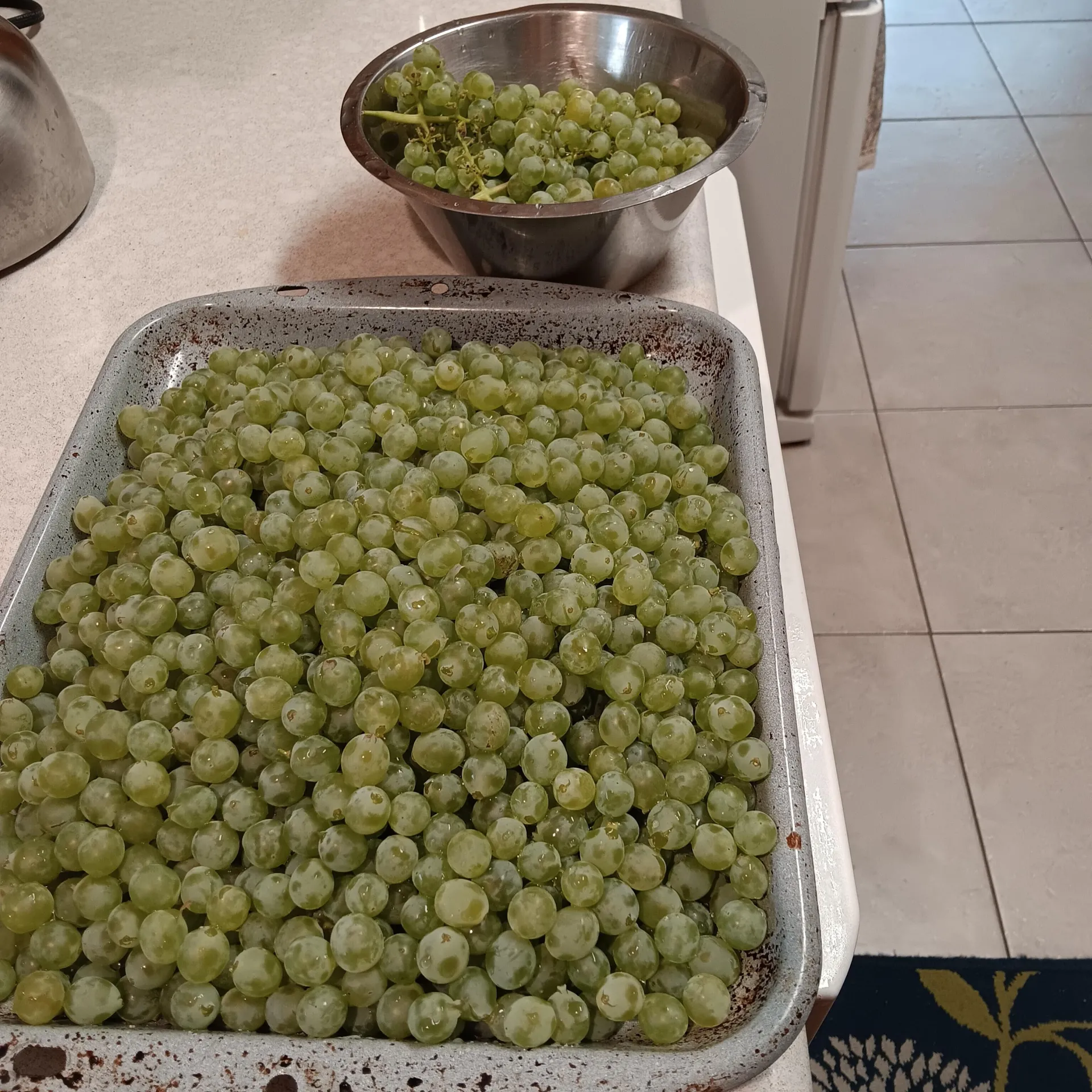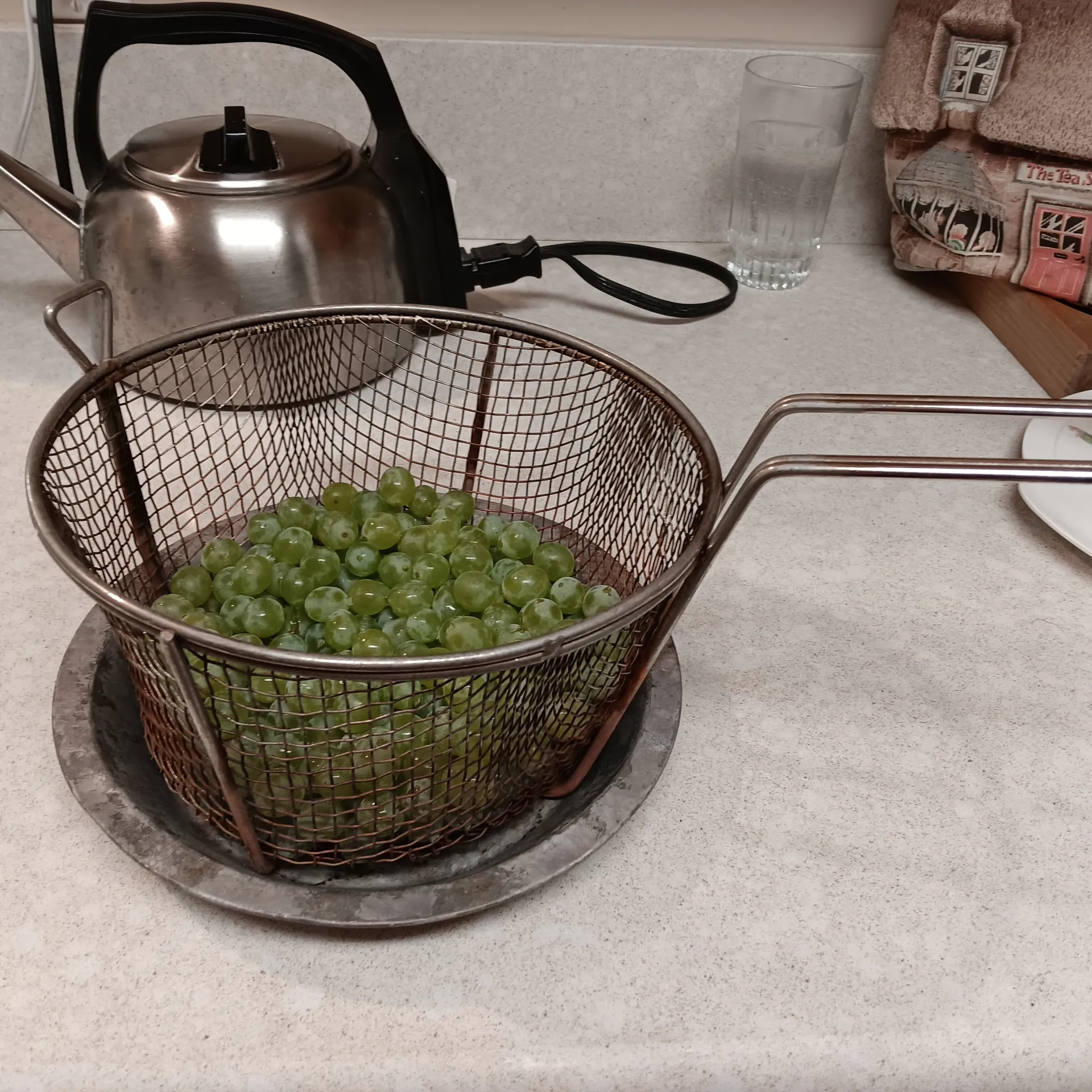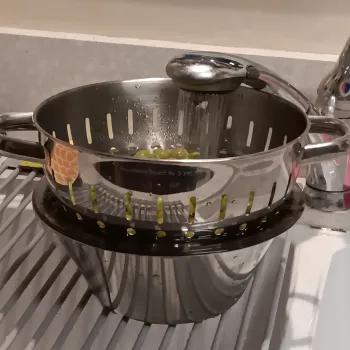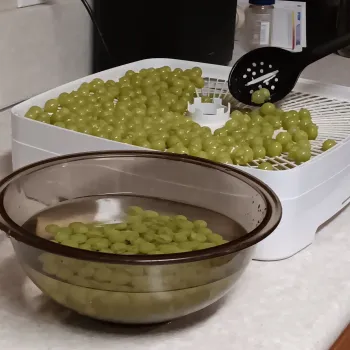By Alison Collin, Master Gardener Volunteer
White table grapes like 'Thompson Seedless' are delicious to snack on, but they can pose a problem to those of us who like to preserve our own produce. Unlike their red-skinned cousins or cultivars like 'Concord', they are generally lacking in interesting flavors for making juice and jellies. Those things can be made, but they are not very exciting.
White table grapes do make good raisins, and at this time of year my kitchen becomes a veritable raisin factory! Over many years I have honed my skills and can work pretty efficiently, so I thought that I would pass on a few tips to any readers who have too many white grapes to eat at once.
The Process
The basic steps are as follows:
- Harvest seedless grapes. I have Thompson's Seedless variety. Ten pounds make about 1.5 quart jars of finished raisins. Harvest as close to processing as possible because if the fruit is left lying around for more than a day or two the little fruit stems tend to wither and then break off still attached to the fruit, rather than the fruit breaking off cleanly.
- Wash fruit. I use a dedicated dish pan inside the sink because the bunches often contain old, dried, sterile flowers which are very messy and tend to stick to your fingers and then get onto everything. Luckily these float, so it is easy to let the bowl overflow with water in order to get rid of them. Swish the grapes about a bit to help this process.
- Stem the grapes. I stem the entire crop before I begin any of the other part of the process, discarding the smallest grapes, and any that are damaged. I have a waste bucket at my feet and a small bowl for rejects on the counter. The good ones are piled up on an old tray which makes it easy to compare sizes and to spot any damaged ones. It takes me an hour to stem 10 lbs. of smallish grapes.
- Check the skins. The grape skins must be split in order for them to dry properly. This process of splitting fruit skins is called checking. I do this by plunging them into boiling water for 30 seconds to 1 minute. I put a 2” layer into a deep fryer basket that fits inside a large pot filled with a generous amount of boiling water. As soon as they enter the water, I start the timer on my stove. It takes about 45 seconds for the majority of my grape skins to split. There will always be a few that don't open, but to leave them in longer risks cooking them. Different varieties and different elevations may need more or less time.
- Rapid cooling. As soon as the skins are split, I tip the contents from the chip basket into a colander, place that in a bowl of iced water and run cold water through it. If you can get two cooling bowls in action it is helpful for the work flow because this takes longer than the checking so it reduces “log jams”. Drain.
- Dehydrating. Spread the grapes in a single layer onto dehydrator trays. Set the thermostat to 135°F. They take about two days to dry, and I rotate the trays every 8 hours. After the first 12 hours I check the trays and pierce any grapes which did not check properly, and remove any that have already dried. When they are wrinkled and leathery with no moisture pockets they are ready for storage in an airtight container in a cool dry place. I freeze a good proportion of my raisins whenever I get a bumper crop.
Additional Tips
- More detailed instructions on using a dehydrator to make raisins or other dried fruits are available from Colorado State University Extension.
- If you have two people working on the checking, cooling and spreading these processes are pretty fast.
- Personally I always dip my grapes in a solution of ascorbic or citiric acid for a few minutes beween steps 5 and 6. It is tedious to do! (See instructions in the CSU link above.)
- I have tried drying grapes in the sun, but have never been very successful, and those that dried became rock hard. I prefer the consistency and control of the dehydrator, but you may have better luck!
- If you have large grapes it is generally advised to cut them in half. Then you can dispense with stage 4. Halved fruit usually benefit from the ascorbic acid treatment.
- Some information online suggests pricking grapes with a pin to break the skins instead of blanching. Apart from the tedium of doing that to every grape, I think that those grapes would take a very long time to lose their moisture.
- You can also make fruit leathers with grapes! Here are tested fruit leather instructions: https://nchfp.uga.edu/how/dry/recipes/fruit-leathers/

